Have you ever noticed that cooking is much easier to do if the counters are clear, and the dishwasher and dish drainer are empty? I think a clean kitchen is a pleasure to be in and to work in. A sparkling clean bathroom makes me feel more like I’m vacationing in a nice hotel room than enduring yet another ordinary day at home. When my family all pitched in, and we cleaned the house super-fast for short-notice visitors, I always marveled aloud at how nice it looked! I wanted my helpers to feel appreciated, but I also wanted them to focus on what they had accomplished and enjoy the fruits of their labors.
The big question on your mind may be how to get your children to pitch in and help. Should you bribe them? If you routinely reward them, will they always expect some tangible payment for helping? And would a regular reward really be any different from a bribe? A bribe is something promised in advance in order to obtain a desired result. A true reward should be a surprise given after the fact as a bonus for desirable behavior.
I gave my children occasional rewards for cooperation and patient endurance after a grueling day of errands or shopping. You did a great job of helping without whining or complaining, so now you can pick out a treat! Usually, the rewards were simple things like a candy bar or a small toy, nothing to break the budget, but enough to say Thanks — you’re appreciated! At other times, when our children mentioned a more expensive item they might like to save up for, we made them a surprise gift of it, as another unexpected reward for being a good, cooperative, and helpful member of the family on a regular basis.
My kids tidied up their own bedrooms as one of their normal duties, but about once each year I would help each of them with a thorough overhaul. We went through all of their clothing, culling the outgrown or damaged things. We deep-cleaned the closets and corners that usually got ignored. We rearranged the furniture to suit their latest whim or growing-up needs. That much work often took more than a single day, but when we were finished, I had helped each child see the benefits of all our progress: more floor space for playing board games, new bookshelves for organization, or a desk in their bedroom for a private work space. Many of the decisions along the way were left up to the child in question, so that they had a true sense of ownership in the reorganization process, and along with that came the satisfaction of having things the way they wanted them. Yes, sometimes it is difficult to part with a favorite shirt when the child can still get into it (sort of), but the feeling of moving on to a few new clothes (and making some new memories) will be well worth it. Completing this laborious task should be marked by several moments of admiration and recognizing the satisfaction in a job well done.
There is satisfaction to be found in even mundane tasks. Emptying the kitchen trash can is hardly anyone’s favorite job, but once it has been done, it is much easier to toss the next item in! Nothing falls out and slithers to the floor, you don’t have to cram the pile down to make room for anything else, and you won’t be reminded (again) that the trash still needs to be emptied, and it is still your turn to do it.
We moms often find ourselves expending all sorts of energy to get tasks done, but we need to save a little of that energy for praising the job well done and bestowing our satisfaction in the accomplished task. You worked a long time on that! It feels good, doesn’t it, to have it finally done! And you did a good job, too — I can tell that you put a lot of effort into your work! Who wouldn’t like to hear that? Even when no one else had helped me with my own large or time-consuming tasks, sometimes I still exclaimed aloud over a finished job and expressed how nice it looked or felt to have it completed, just to inspire my children to look for satisfaction in the completion of their own tasks.
You can bribe a student to complete a lesson on time (or ahead of time), or you can surprise them with a reward for the lessons they finish quickly under their own motivation. The latter will be less stressful and more beneficial to all involved. When the child is surprised with a reward, he feels satisfaction at knowing his accomplishment was appreciated by others. When he has been bribed, he feels relief that the distasteful task is now out of his life and (perhaps) a greedy glee that he tricked someone else into paying him to do said distasteful task. A student who learns to enjoy satisfaction as its own reward does not need constant tangible gifts, as the object of bribery does. Teach your children to find satisfaction in doing their best and completing their tasks in a timely manner. It will be a lesson they carry with them for the rest of their lives.
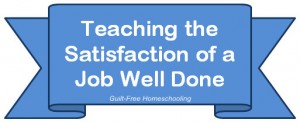
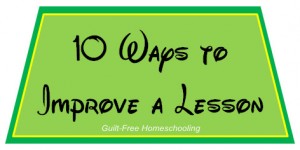

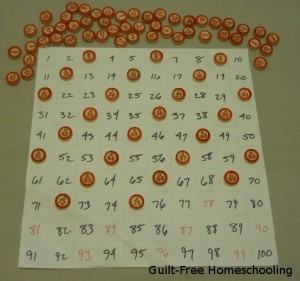
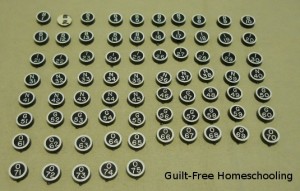

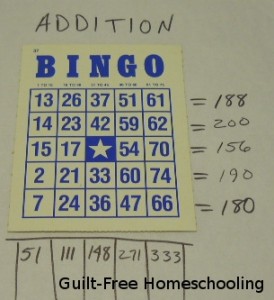


 Guilt-Free Homeschooling is the creation of Carolyn Morrison and her daughter, Jennifer Leonhard. After serious disappointments with public school, Carolyn spent the next 11 years homeschooling her two children, from elementary to high school graduation and college admission. Refusing to force new homeschooling families to re-invent the wheel, Carolyn and Jennifer now share their encouragement, support, tips, and tricks, filling their blog with "all the answers we were looking for as a new-to-homeschooling family" and making this website a valuable resource for parents, not just a daily journal. Guilt-Free Homeschooling -- Equipping Parents for Homeschooling Success!
Guilt-Free Homeschooling is the creation of Carolyn Morrison and her daughter, Jennifer Leonhard. After serious disappointments with public school, Carolyn spent the next 11 years homeschooling her two children, from elementary to high school graduation and college admission. Refusing to force new homeschooling families to re-invent the wheel, Carolyn and Jennifer now share their encouragement, support, tips, and tricks, filling their blog with "all the answers we were looking for as a new-to-homeschooling family" and making this website a valuable resource for parents, not just a daily journal. Guilt-Free Homeschooling -- Equipping Parents for Homeschooling Success!

Recent Comments